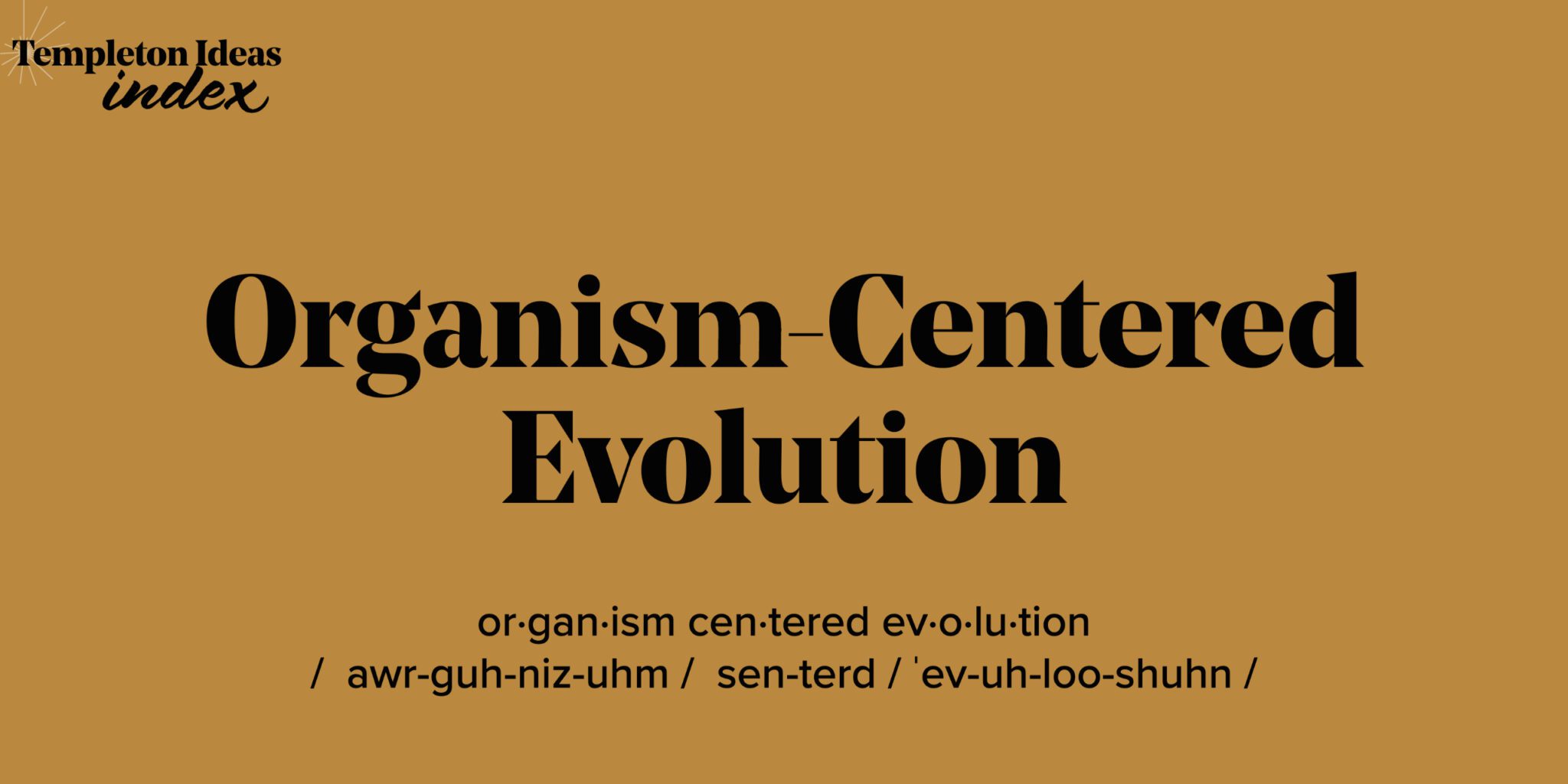Organism-Centered Evolution is a way of thinking that looks beyond the genome to the ways that individual organisms are participants in their own evolution.
A bewildering array of forces are at work, including epigenetic inheritance and developmental plasticity, as well as niche construction, microbiome transfer, and cultural behaviors.
While affirming the significant role of the gene in evolution, organism-centered approaches suggest that non-genetic factors are not merely footnotes but important drivers in the intricate feedback loops that affect how organisms grow and adapt.
More Than Genes
Darwin’s theory of natural selection predates most of what we know about genetics. But discoveries throughout the 20th century — not least the unraveling of the structure and function of DNA — put genetic inheritance at the center of evolutionary theory. Evolutionary theory’s Modern Synthesis prioritizes a gene’s-eye view of natural selection, and public explanations of evolution often shrink life’s complexity to a competition between “selfish genes.”
But focusing primarily on individual genes and population genetics can leave individual organisms looking like passive players in their own development and evolution: they receive their genetic instructions, and then wait for outside forces to determine whether their genes will be passed to the next generation.
But recent biological findings paint a much richer picture of life, as individual organisms shape their environments to guide how they grow, which genes are expressed, who they partner with, and what types of non-genetic inheritance they pass to their offspring.
Niche and Cultures
Charles Darwin famously noted the ways that Galapagos Island finches’ beaks seemed to have evolved to help the birds thrive in specific ecological niches. But biologists are realizing that many organisms don’t just find and exploit existing niches — they take an active hand in adapting their environments to serve their needs. Termite mounds, beaver dams and earthworm tunnels are classic examples of niche construction, but niches can be more fleeting, like a huddle of penguins that maintains the group’s temperature in the Antarctic night.
Advantageous behaviors can be passed on outside of genetic inheritance through cultural transfer, creating differences in populations that may eventually cause species to diverge. In one case, a population of dolphins who had taught each other to use sponges to forage for food eventually differentiated enough from neighboring populations that scientists could recognize the sponge-feeders by their DNA. More than 6,000 years ago, people in what is now Kenya and Sudan began consuming milk products — even though adults did not produce the enzyme needed to break down lactose. This cultural choice created the conditions in which a lactose-digesting mutation, when it happened, could offer an advantage that would push for the mutation to become part of the population’s ongoing gene pool.
Developmental Plasticity
Two organisms starting with the same set of genes might develop quite differently depending on environmental cues. Plants grown in full sun will grow fewer leaves and more roots compared to those that grow in shady environments. Leafy plants produce leafy offspring — but the traits change in a different environment. Organisms exhibiting this sort of developmental plasticity look less like the results of blindly executing genetic programs and more like a dance in which genetic expressions and developmental outcomes provide a flexible range of outcomes suited to the realities of an individual organism’s life.
Microbiomes, Symbiotes and the Web of Life
An organism’s microbiome — the multitude of other organisms that live close to, on the surface of, or inside a given organism — plays a significant role in whether an individual organism flourishes or withers. The presence of other organisms can also affect how an organism develops. Baby calves only develop the stomach folds necessary for efficient cellulose digestion when colonies of bacteria they initially ingested in their mother’s milk start digesting plant fiber, releasing short-chained fatty acids that stimulate the stomach’s growth. Mother dung beetles prepare elaborate inoculated brood balls that give their offspring food and beneficial bacterial symbionts as they develop. Many microorganisms take symbiosis to the next level, freely exchanging genes and molecules horizontally between individuals and across species, providing a web of pathways for development and adaptation beyond mere generation-to-generation genetic inheritance.
Extending the Evolutionary Synthesis
Organism-centered evolution offers a set of concepts with potential to reconfigure and expand the gene-centric evolutionary synthesis that reached its peak in the last century. Although some evolutionary biologists view these concepts purely as outflowings of underlying genetic truths, others draw broader conclusions. Organisms are not just vehicles for their genes, but actively shape their own environments and subsequent evolution. Life itself is not reducible to genomes alone– as biological research advances, it can incorporate more factors within and among organisms that collectively produce, as Charles Darwin put it, “endless forms most beautiful.”
Still Curious?
Learn more about recent research into epigenetic inheritance, developmental plasticity, and niche construction at Extended Evolutionary Synthesis website.
Read the John Templeton Foundation-commissioned research review providing an overview of organism-centered evolution and the Extended Evolutionary Synthesis.
|
If there’s a specific term you’d like to see featured in the Templeton Ideas Index, you can reach out to us at communications@templeton.org |
Key Takeaways
-
Organism-Centered Evolution is a way of thinking that looks beyond the genome to the ways that individual organisms participate in their own evolution and even pass on a significant non-genetic inheritance to their offspring.
-
Many organisms can adapt their environments to serve their needs, creating niches and exhibiting advantageous behaviors.
-
Environmental cues can significantly impact how organisms develop, even with the same set of genes, allowing for flexibility in genetic expressions and outcomes that suit an organism’s specific circumstances.
-
An organism’s microbiome and symbiotic relationships with other organisms play vital roles in its development and well-being.
